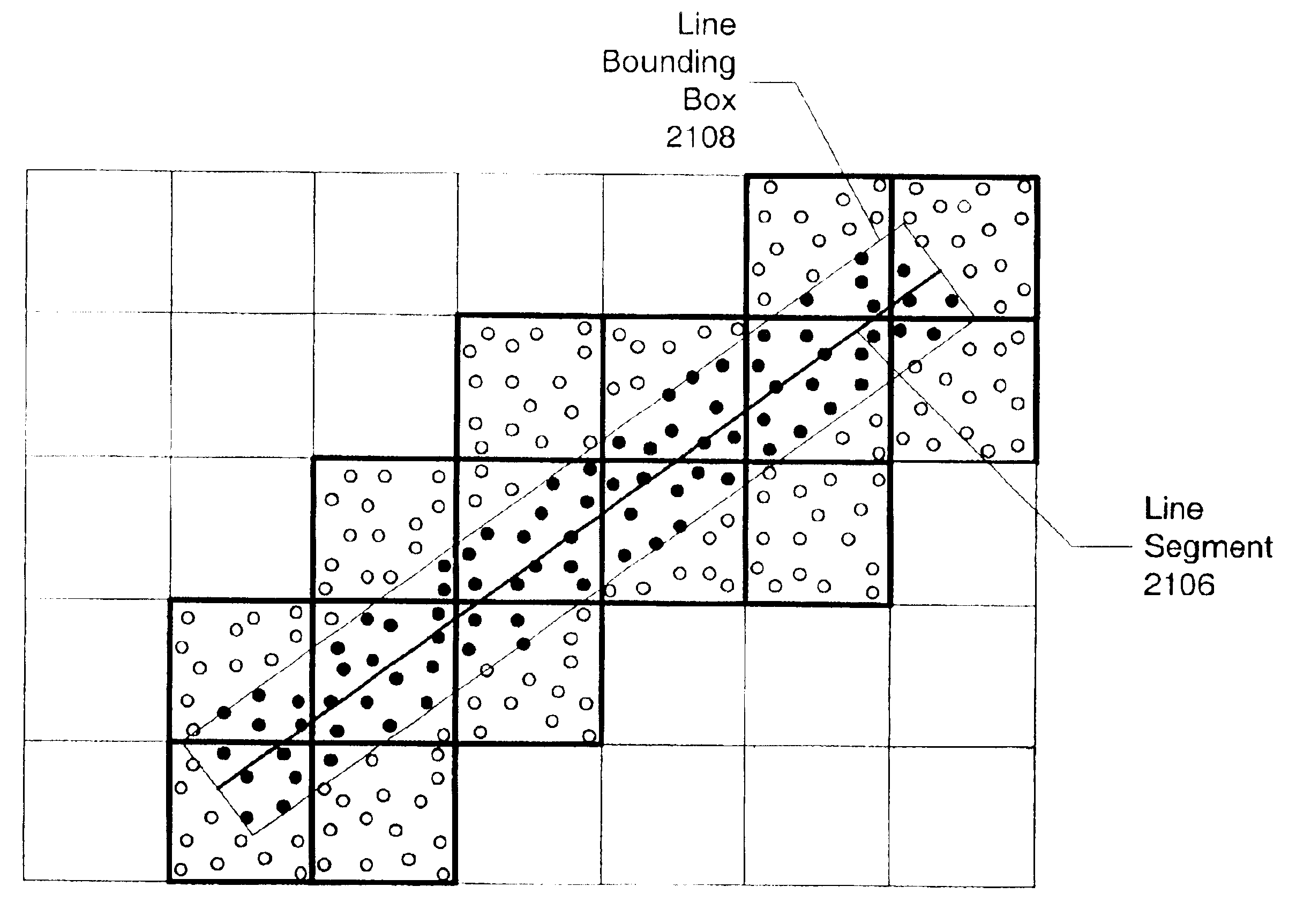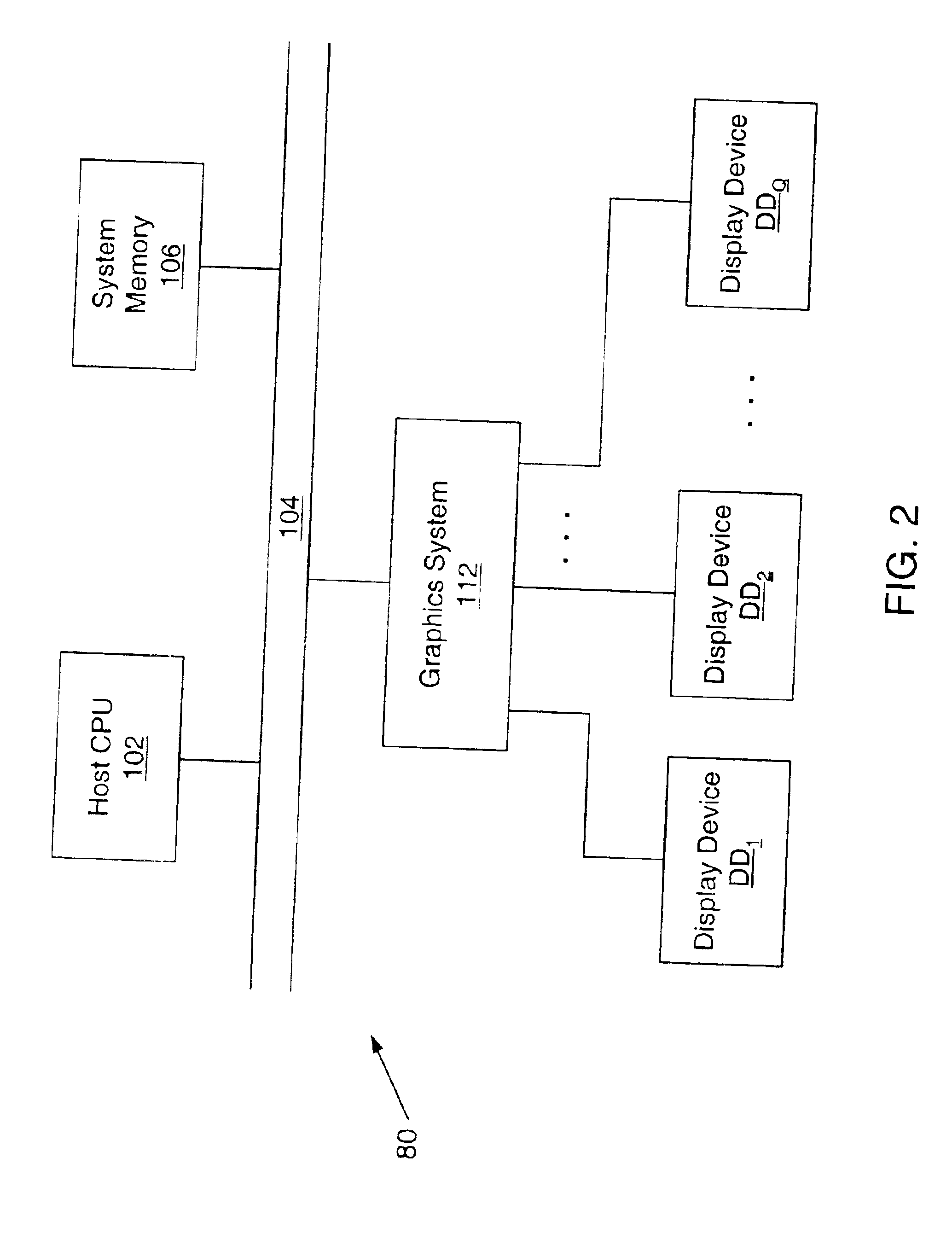Rendering lines with sample weighting
a line weighting and sample technology, applied in static indicating devices, memory adressing/allocation/relocation, instruments, etc., can solve the problems of increasing the complexity of images displayed, increasing the complexity of data being sent to the display device, so as to increase the effect of expanding the width of the displayed line and increasing the anti-aliasing correction factor
- Summary
- Abstract
- Description
- Claims
- Application Information
AI Technical Summary
Benefits of technology
Problems solved by technology
Method used
Image
Examples
Embodiment Construction
FIG. 1—Computer System
[0066]FIG. 1 illustrates one embodiment of a computer system 80, which performs three-dimensional (3-D) graphics. Computer system 80 comprises a system unit 82 which may couple to one or more display devices such as monitor devices 84A and 84B and / or projection devices PD1 through PDG. Monitor devices 84A and 84B may be based on any of a variety of display technologies. For example, monitor devices 84A and 84B may be CRT displays, LCD displays, gas-plasma displays, digital micro-mirror displays, liquid crystal on silicon (LCOS) display, etc., or any combination thereof. Similarly, projection devices PD1 through PDG may be realized by any of a variety of projection technologies. For example, projection devices PD1 through PDG may be CRT-based projectors, LCD projectors, LightValve projectors, gas-plasma projectors, digital micromirror (DMM) projectors, LCOS projectors, etc., or any combination thereof. Monitor devices 84A and 84B are meant to represent an arbitr...
PUM
 Login to View More
Login to View More Abstract
Description
Claims
Application Information
 Login to View More
Login to View More - R&D
- Intellectual Property
- Life Sciences
- Materials
- Tech Scout
- Unparalleled Data Quality
- Higher Quality Content
- 60% Fewer Hallucinations
Browse by: Latest US Patents, China's latest patents, Technical Efficacy Thesaurus, Application Domain, Technology Topic, Popular Technical Reports.
© 2025 PatSnap. All rights reserved.Legal|Privacy policy|Modern Slavery Act Transparency Statement|Sitemap|About US| Contact US: help@patsnap.com



